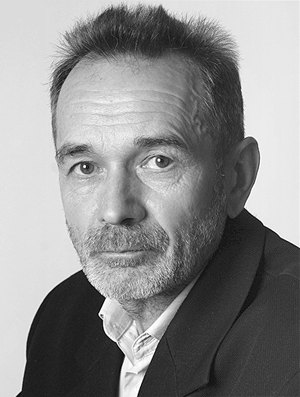Some methods and physiological characteristics of estimation of exercise performance of schoolchildren
Фотографии:
ˑ:
Some methods and physiological characteristics of estimation of exercise performance of schoolchildren
S.P. Mayfat, associate professor, Ph.D. Ural state pedagogical university, Ekaterinburg
Key words: specific run test, exercise performance, heart rate, nonlinearity, regulatory apparatus.
The worked under the guidance of V.L. Karpman specific run test PWC170 is perspective not only in researches but also in the practice of teacher of physical culture. Nowadays allocation of this test category is based on physiological features of growing organism and intensification of attention to physical culture and mass sport.
Both in research and practical work of experts engaged in the matters of exercise performance the cases of using inaccurate information are frequent that can result in further mistakes: increase or decrease of indices.
In the present study in natural motor conditions it was proved that conducting of the modified by the authors variant of specific run test in 15-18-year-olds at the common extrapolar evaluation method of indices of the PWC170 test reveals the two error sources:
– different ascent of the dependence of "load -heart rate" in the studied range of working power;
– its nonlinear character even at loads with heart rate is realized under 170 strokes a minute.
The dynamics of heart rate increase in the study is associated with nonlinearity. The nonlinearity of the dependence of "load -heart rate" is usually mostly characterized by slower growth of heart rate with increase of load intensity, but can show an opposite trend too. To improve the information value of PWC170 test both in sports practice and on the lessons of physical culture, especially while using the specific run test it is appropriate to make the level of test load closer to the estimated one, i.e. to the level of heart rate equal to 170 strokes a minute.
The PWC170 test offered for children and teenagers by some authors has been proved to be unsuitable at running loads since it can cause a mistake.
Pulse responses seem to be less "vivid" at traditional performance of test on a bicycle ergometer with the dominating power work of lower body and static pose component compared to dynamic run loads.
Bibliography
1. Abrosimova, L.I. Allocation of teenagers' exercise performance / L.I. Abrosimova, V.E. Karasik // Novye issledovaniya po vozrastnoy fiziologii. – Мoscow: Pedagogika, 1977. – № 2 (9). – P. 114–117. (In Russian)
2. Belotserkovsky, Z.B. Study of exercise performance by means of specific loads / Z.B. Belotserkovsky, V.L. Karpman, A.A. Kirilov // Teoriya i praktika fizicheskoy kultury. – 1977. – № 4. – P. 25–28. (In Russian)
3. Belotserkovsky, Z.B. Cardiac activity in athletes with different myocardial mass index / Z.B. Belotserkovsky, B.G. Lyubina // Sports medicine and studies of adaptation to physical loads: Scient. readings devoted to the 80th anniversary of prof. V.L. Karpman, 27 April. 2005 / RSUPC. – Мoscow, 2005. – P. 212–220. (In Russian)
4. Kalinin, V.K. Allocation of runners' aerobic abilities by means of telepulsometry / V.K. Kalinin, N.I. Pudov, F.P. Suslov // Teoriya i praktika fizicheskoy kultury. – 1972. – № 12. – P. 50–52. (In Russian)
5. Karpman, V.L. Test in sports medicine / V.L. Karpman, Z.B. Belotserkovsky, I.A. Gudkov. – Мoscow: Fizkultura i sport, 1988. – P. 135–155. (In Russian)
6. Kornienko, I.A. Age changes of some indices of aerobic performance in 7-16-year-old boys / I.A. Kornienko, G.M. Maslova, V.D. Son'kin, L.G. Evseev // Fiziologiya cheloveka. – 1978. – V. 4. – № 1. – P. 61– 67. (In Russian)
7. Levushkin, S.P. Effect of muscle loads of different direction on physical state and high sickness rate of 7-10-year-old schoolchildren / S.P. Levushkin, R.R. Salimzyanov, E.V. Golovikhin // Teoriya i praktika fizicheskoy kultury. – 2004. – № 4. – P. 41–44. (In Russian)
8. Mayfat, S.P. Monitoring of junior runners' fitness in the period of initial sports specialization: abstract of Ph.D. thesis / S.P. Mayfat. – Ekaterinburg, 2002. – 24 P. (In Russian)
9. Mayfat, S.P. Features of warming-up curves at run tests in junior athletes by the data of radiopulsometry / S.P. Mayfat, V.V. Rozenblat, S.N. Malafeeva // Fizicheskaya kultura: vospitanie, obrazovanie, trenirovka. – 2004. – № 4. – P. 30–32. (In Russian)
10. Malozemov, O.Yu. The basics of health and monitoring of human physical state: study guide / O.Yu. Malozemov, I.I. Malozemova, L.A. Rapoport. – Ekaterinburg: AMB, 2010. – P. 194–196. (In Russian)
11. Razumov, S.A. Adaptive reorganizations in conditions of motivations and emotional stress / S.A. Razumov, N.V. Zimkin, I.E. Mel'nikova et al. // Physiological mechanisms of exercise performance: Collected researches. / Volgograd SIPC. – Volgograd, 1991. – P. 21–28. (In Russian)
12. Samsonova, N.I. Estimation of the period of warming-up in schoolchildren within physical work based on the principles of regulatory theory: abstract of Ph.D. thesis / N.I. Samsonova. – Мoscow, 1971. – 15 P. (In Russian)


